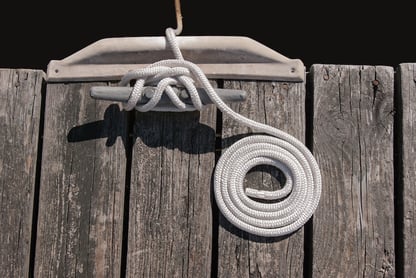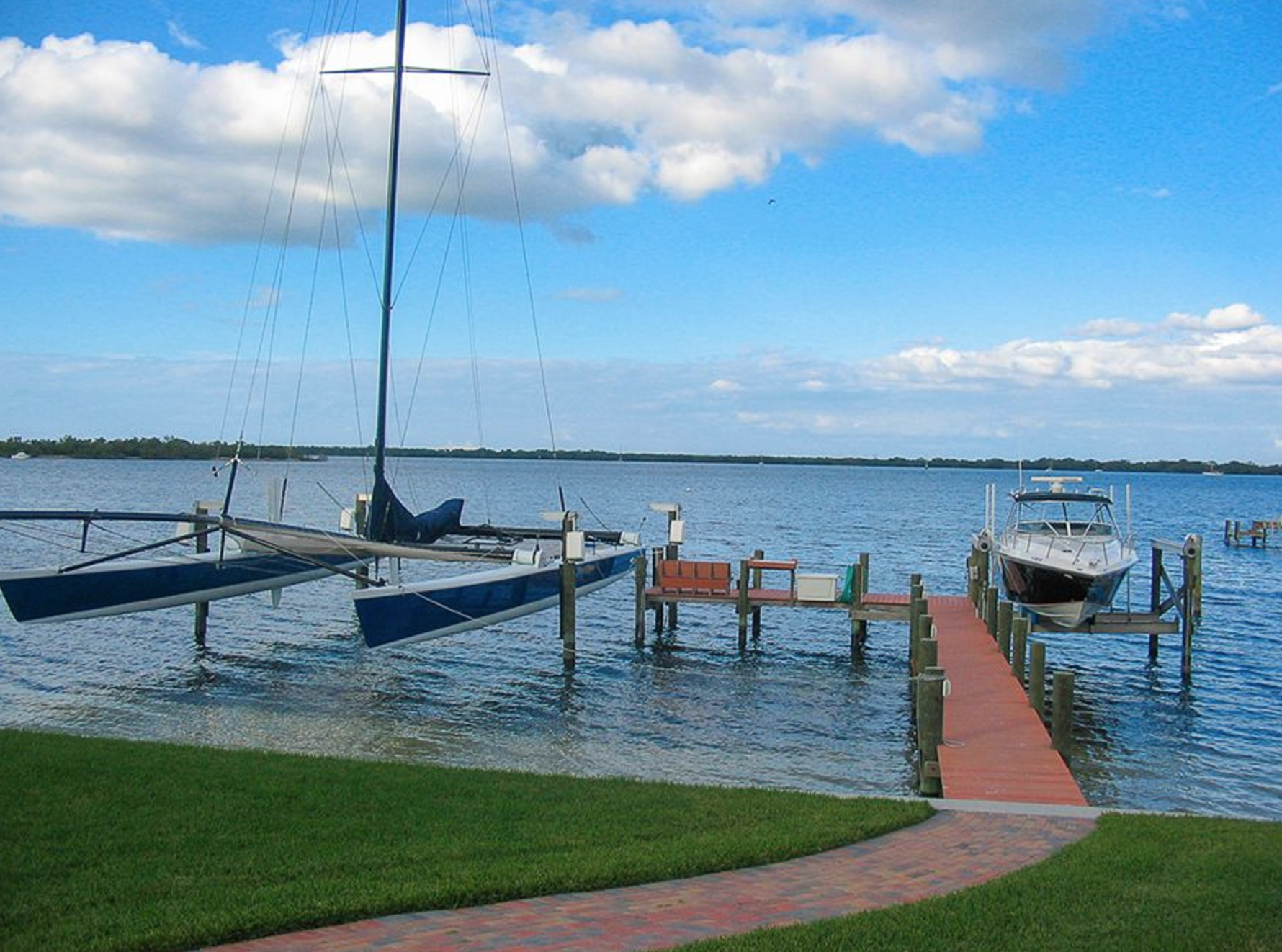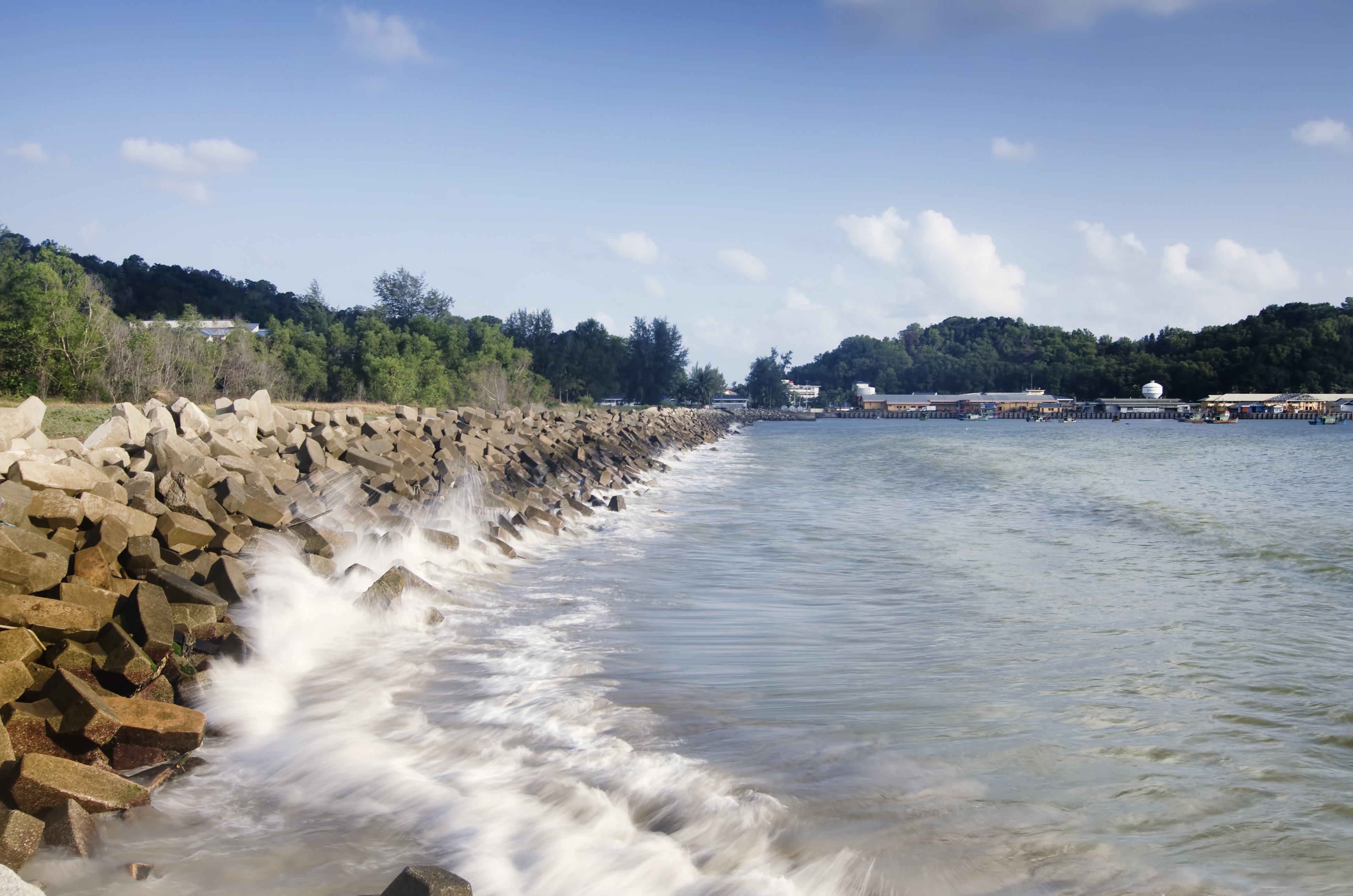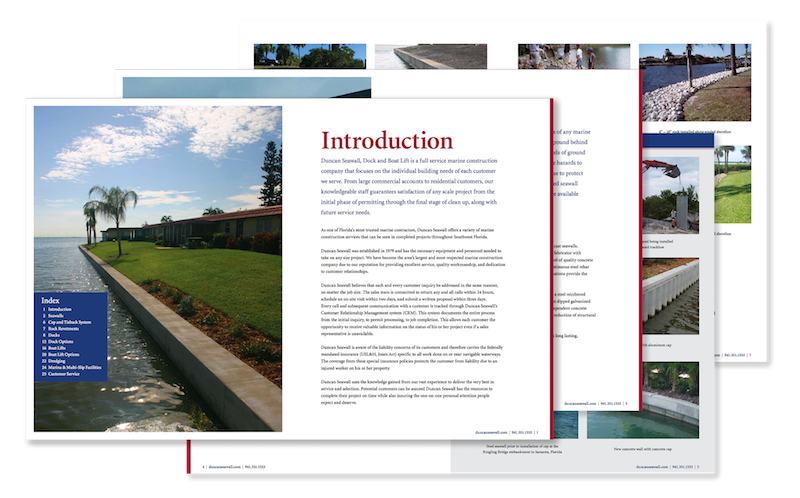 Here’s what sailors say: If it’s on the ground, it’s a rope. If it’s on a boat, it’s a “line.” When you’re docking your boat, line handling is critical; securing your boat at the dock takes skill, and maybe a little luck.
Here’s what sailors say: If it’s on the ground, it’s a rope. If it’s on a boat, it’s a “line.” When you’re docking your boat, line handling is critical; securing your boat at the dock takes skill, and maybe a little luck.
Related Blog: Best Materials and Brands for Your Florida Dock Project
Docklines: Size Matters
Width
When you’re docking, having the wind behind you helps, but so does having the right size docklines. Your line size (width) depends on the length of your boat:
- Under 20' can use 3/8" lines
- 20'-30', 1/2 " lines
- 30'-40', 5/8" lines
- Over 40', 3/4" lines
Lines that are too small to secure your boat are a problem. Lines that are “too big” can do more good than harm, so you may consider going to the next size for additional strength.
Length
Cleats are metal fixtures on your boat and on the dock to which you loop and affix your lines. The length of line from your boat’s cleat to the dock should equal at least two-thirds of the length of your boat. For example, if you have a 20' boat, 14' lines are a good length. This does not apply to spring lines. Your spring lines should be equal to your boat’s length and then some, so your 20' boat should have spring lines at least 25' in length.
Dockline Material
Nylon is exceptionally well suited for dock lines. Avoid all ropes labeled polyester, Dacron, Kevlar, or Spectra. The right rope for dock lines is good, old-fashioned nylon.
Smaller nylon lines are usually “laid” or “braided” for additional strength, and for marine lines, braided is the best option. Laid lines have three or more twisted strands, and you can find them in hardware stores. It’s a good price, but it tends to kink. Braided lines have more strands, run smoothly, and shouldn’t kink, but they are more likely to snag.
Your Lines’ Longevity
Chafing impacts your lines’ longevity, but you can control line chafing. Examine the dock/boat hardware for jagged edges. If there’s any rough metal that comes in contact with your lines, file it down.
Here’s an old sailors’ trick for lines that are tied to the dock for extended periods of time: Fire hose material is a super-strong fabric, usually a weave of spun polyester and/or filament nylon. You can cut the nozzle-end off a fire hose and thread your dock lines through it, ensuring the lines are protected at typical chafe points: the cleats and the rub rail or toe line of your boat. You may be a part-time boater, but your boat is an investment, and your dock lines can help keep it free from damage.
Duncan Seawall, Dock & Boat Lift
To learn more, download your free copy of our Complete Guide to Docks, but your line material and line-tying skills won’t do much good if your dock is choppier than the water. Call 941-351-1553 or contact Duncan Seawall, Dock & Boat Lift to discuss docking options. We build durable docks for large commercial vessels as well as small runabouts and watercraft. Also, check out our photo gallery of docks to see the variety of styles from which you can choose!










